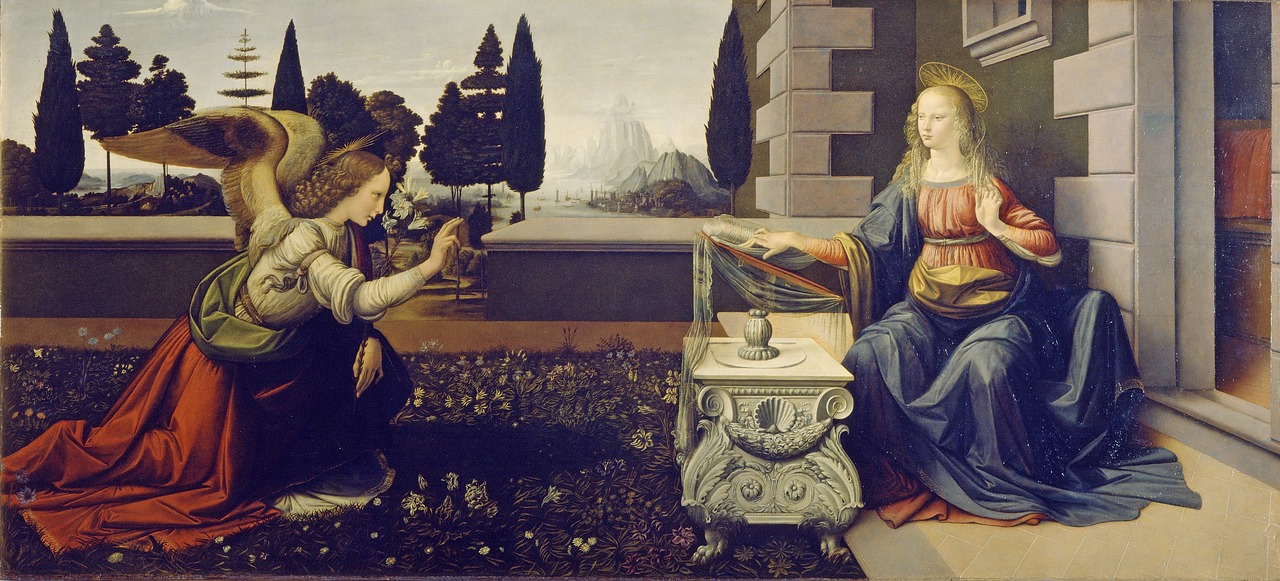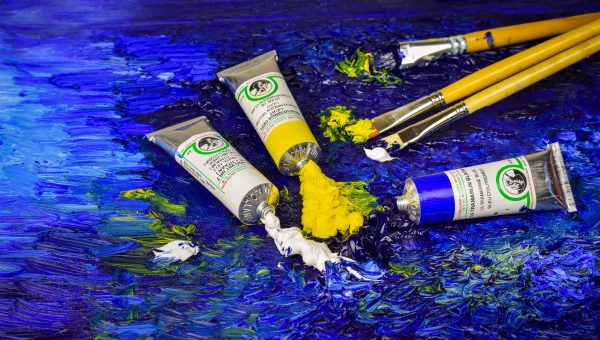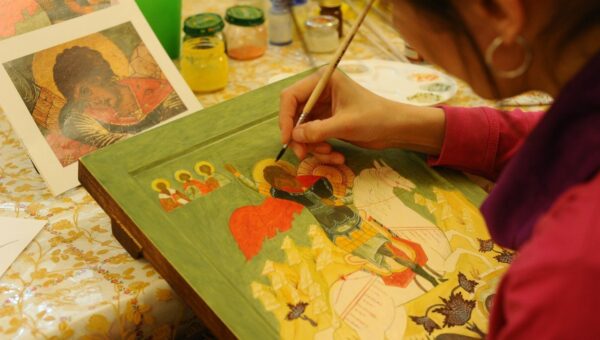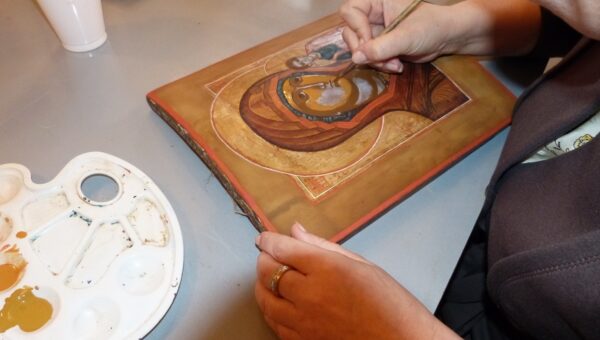
Everything you need to know about tempera (part 3)
How to work with tempera
Success in working with tempera, as with any other technique, depends largely on having the necessary equipment to hand.
The brushes that you need to have for tempera painting are Kolinsky sable-hair brushes and bristle brushes. Thick Kolinsky sable-hair brushes work very well. After use, they must be thoroughly washed in warm water, with soap. The palettes used in tempera painting are made of porcelain or white enamel. They must have at least twelve wells for paints around the sides. The central part is used for mixing paint. Water can be poured into a jar, which is strengthened in the palette or placed nearby. Once you have finished work, the palette must be cleaned of any remaining paint, and rinsed with a sponge or a cloth.
You need the same sketchbook as for oil painting, the only difference being that the palette for the paints will not be wooden, but made of porcelain or enamel.
Before setting about completing a sketch with paints (whether tempera, or gouache), it is necessary to solve, in the sketch, the compositional problem of including all the elements of the future image, and constructing objects in a way that takes account of their location in space. In this case, the sketch can provide assistance, and so it is recommended that you avoid sharp, thick lines, that could later be noticeable when covered with thin coats of paint.
It makes sense to seek out different options for the overall composition in the small preliminary drawings, achieving expressiveness in how the objects are laid out in one or another format for the page, and clarity in the tone and color task. Whilst the sketching in tempera art is created with charcoal on a clay canvas, the image is actually created using a gelatin solution.
The artwork begins with finely applied layers for the large areas in the image. Whilst with watercolors it is recommended that you start with light tones and work towards darker ones, with tempera you have to mark in the dark areas of the image simultaneously, with the tones at full strength. Guided by the principle of moving “from the general to the specific”, the artist moves from the large shapes to bringing out the necessary details, without neglecting the integrity of the large color masses.
In tempera artwork, just as in oil-paintings, less use should be made of whites when painting the shaded areas of a form; this way, the color will be made resonant and active.
Painting with temperae enables you to use a variety of techniques, including the technique of wet painting, multi-layered painting, in separate strokes of both pasty, and thin, almost transparent layers.

When working on quick studies with tempera, the color relations need to be taken with full force straight away; to this end, the alla prima technique is used, solving the question of form in one go, without thinking ahead to future layers. Tempera works well when used for under-paintings beneath an oil painting, because it enables you to solve the problem of big masses of color at an early stage by having large areas of coverage, thereby organizing the color scheme for the entire picture.
If the artist faces the task of conveying subtle tonal transitions (for example, in depicting clouds, reflections in the water, in the treatment of big folds in a person’s clothing, in dealing with objects in the background etc.), it is appropriate to use the wet painting technique, i.e. on a wet bit of canvas or an area that has just been painted, using soft combinations of adjacent tones. This method is also recommended when conveying shaded areas in scenes from nature, which are characterized by a generality of form, with no sharply delineated borders between forms. It is best to work without whites.
It is recommended to work with the help of separate, pasty strokes when conveying lighted areas, where there are fairly contrasting tonal relations, and where you need to convey precise borders between forms and bring out the material or fabric of an object. You must strive to avoid damaging the texture of the canvas, though.
The brush-stroke on the canvas must convey the natural world convincingly, without being the end goal in and of itself. Budding artists are sometimes tempted to be guided in their work by “the beauty of the stroke”, without taking into account the character of the forms depicted and the solution required for their study.
The foundation beneath tempera paint
As a foundation beneath tempera paint, artists use plywood, card, primed canvas, or thick paper stretched over a drawing board.
The surface used for tempera painting is a material that does not absorb the binder from paints. If you were to paint on a crumbly, porous material, the image obtained when the paint dried out could radically alter the saturation of the color. The best kind of canvas for tempera is a thick, linseed canvas, with an even weave.






